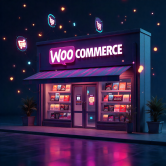When enterprise teams invest in a custom website, they expect it to drive growth, handle complexity, and adapt over time. However, architectural missteps made in the early stages can lead to performance issues, security risks, and expensive overhauls down the line.
This post outlines five common mistakes and provides practical advice to ensure your site delivers long-term value.

1. Ignoring Scalability from Launch
Many projects prioritize features for day one and neglect to consider long-term load expectations.
Common mistakes include:
- Launching with a single server that crashes during traffic surges.
- Building tightly coupled systems where a slow component can bog down the entire site.
- Installing plugins or features without understanding their impact on performance.
How to avoid this:
Design a modular architecture from the beginning that separates critical components. Utilize cloud infrastructure with auto-scaling, CDNs for static assets, and caching layers for frequently accessed data. This approach allows you to handle traffic spikes or new market activity without downtime.
2. Over-Reliance on Plugins and Add-ons
Templates and third-party plugins can speed up development, but they come with hidden long-term costs.
Why it fails:
- Outdated plugins often introduce security vulnerabilities.
- Multiple add-ons can conflict with each other, slowing down site performance.
- Plugin upgrades can break your site unexpectedly.
How to avoid this:
Minimize plugin dependency. For essential features—such as user roles, analytics, or inventory management—either build them in-house or use the core platform’s functionality. Only use third-party modules that are thoroughly vetted and actively maintained to keep your code clean and future-proof.
3. Weak Security Architecture
Enterprise sites handle sensitive business and customer data, and without strong security, you expose your brand to significant risk.
Common security gaps:
- Lack of encryption for stored or transmitted data.
- Over-reliance on outdated frameworks or libraries.
- Poor role-based access control and insufficient logging.
How to avoid this:
Treat security as foundational, not as a checklist item. Enforce HTTPS everywhere and securely store credentials and PII. Implement multi-factor authentication and strong access controls. Audit ecosystem dependencies and monitor for vulnerabilities in real time. For sensitive industries, plan for compliance with standards like GDPR, PCI-DSS, or HIPAA from the start.
4. Poor Integration Planning
Enterprise infrastructure is rarely isolated, and bad architecture can lead to data silos and manual workarounds.
Integration pitfalls:
- Hardcoded connections to CRMs or ERPs break when the tools evolve.
- Clumsily stitched-together sync workflows between systems can cause inconsistencies.
- Adding new tools may require architectural rewrites.
How to avoid this:
Adopt an API-first strategy. Use middleware or message queues for smooth communication between systems. Ensure integrations support real-time syncing without relying on custom hacks, reducing manual work and making it easier to add new tools.
5. Neglecting Future Flexibility
Short-term thinking can result in a rigid architecture that restricts feature rollouts and makes scaling expensive.
Mistakes made:
- Launching with fixed templates or frameworks that cannot adapt.
- Ignoring the business roadmap and building for yesterday’s requirements.
- Designing site layers with tightly coupled components, which makes updates slow.
How to avoid this:
Prioritize flexibility from the first build. Use a modular codebase and frameworks that support component-based updates. Design the site with experimentation in mind, allowing for A/B testing, regional features, or new commerce flows. Keeping things modular makes changes painless.
Real Enterprise Examples: What Went Wrong and How They Fixed It
A high-traffic retail brand:
Traffic spikes during promotional campaigns would crash their monolithic CMS. They switched to a headless setup, added CDN layers, and used Redis to cache product data—resulting in no downtime during peak traffic and 25% faster page loads.
A regulated healthcare provider:
Their vendor plugins lagged behind compliance updates, exposing them to data risk. They rebuilt security components in-house, encrypted data at rest, and enforced strict role-based access—leading to zero audit issues and stronger user trust.
A B2B manufacturer:
They relied on multiple point-to-point integrations, causing frequent sync errors between their ERP and CRM. They implemented a middleware setup to streamline data flows and used APIs to push updates reliably—reducing manual errors and speeding up order processing.
Why Enterprise Teams Need to Avoid These Pitfalls
An enterprise website is a strategic asset, not just a marketing channel. Poor architecture can lead to:
- Higher maintenance costs due to plugin updates and conflict resolution.
- Slower feature rollouts because everything is tightly coupled.
- Security risks that can damage trust and lead to legal consequences.
- Poor performance during campaigns, which affects sales and brand perception.
Investing in the architecture upfront turns your site into a stable platform that supports growth, integrations, and complex workflows.

How to Build Right from the Start
Scalability Planning
- Use modular backend and frontend components.
- Implement caching, load balancing, and autoscaling early.
Plugin Strategy
- Limit external dependencies.
- Build core features internally.
- Regularly audit third-party tools.
Security Design
- Enforce HTTPS and encrypted storage.
- Use strong access controls and real-time threat monitoring.
- Plan for compliance from day one.
Integration Framework
- Build using APIs and middleware.
- Automate sync workflows.
- Design for future platform swaps or expansions.
Flexibility by Design
- Keep the code modular.
- Choose frameworks that allow for updates without full rebuilds.
- Allow for experiments and feature toggles.
Conclusion: Build a Website That Scales Without Breaking
Enterprise-level websites must handle complexity, traffic, and constant change. Mistakes in scalability, plugin reliance, security, integrations, and flexibility can be costly in terms of time and money. A strong architecture can solve these problems before they become crises.
Your custom website should be a long-term growth enabler, not a collection of patches. Invest in architecture that supports scale, protects data, and adapts with your business.
FAQs
1. Why is scalability so important for enterprise websites?
Scalability ensures your site can handle traffic growth, feature expansion, and market changes without downtime or costly rebuilds. Without it, performance suffers during peak usage.
2. How many plugins are too many for a custom website?
There’s no exact number, but the more plugins you rely on, the higher the risk of conflicts, security vulnerabilities, and performance issues. Enterprises should aim to minimize plugin use and build core features in-house.
3. What’s the best way to integrate multiple enterprise systems?
Adopt an API-first approach with middleware or message queues to ensure smooth, real-time data flow between systems without hardcoded connections.
4. How can I make my website more flexible for future updates?
Use a modular architecture and component-based frameworks. This allows you to update individual features without overhauling the entire site.
5. Is a headless CMS better for enterprise scalability?
For many enterprises, yes. A headless CMS separates content management from the front end, making it easier to scale, integrate with other systems, and customize the user experience.
6. How early should security be addressed in a website project?
From the very start. Security should be part of the architecture, not added later. This includes encryption, access control, compliance planning, and regular vulnerability monitoring.
7. What’s the biggest long-term risk of poor website architecture?
The biggest risks are mounting technical debt, security vulnerabilities, and costly rebuilds when your site can’t keep up with growth.




